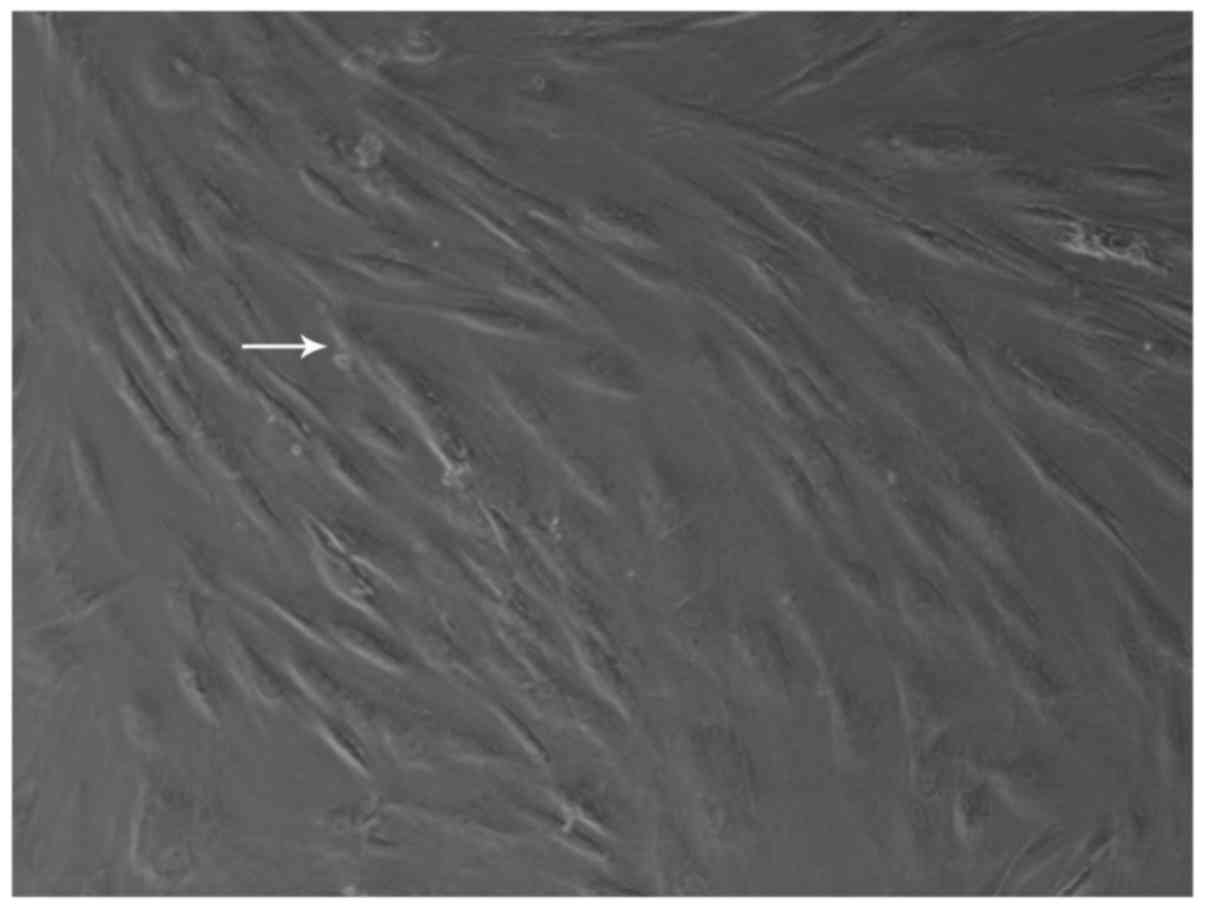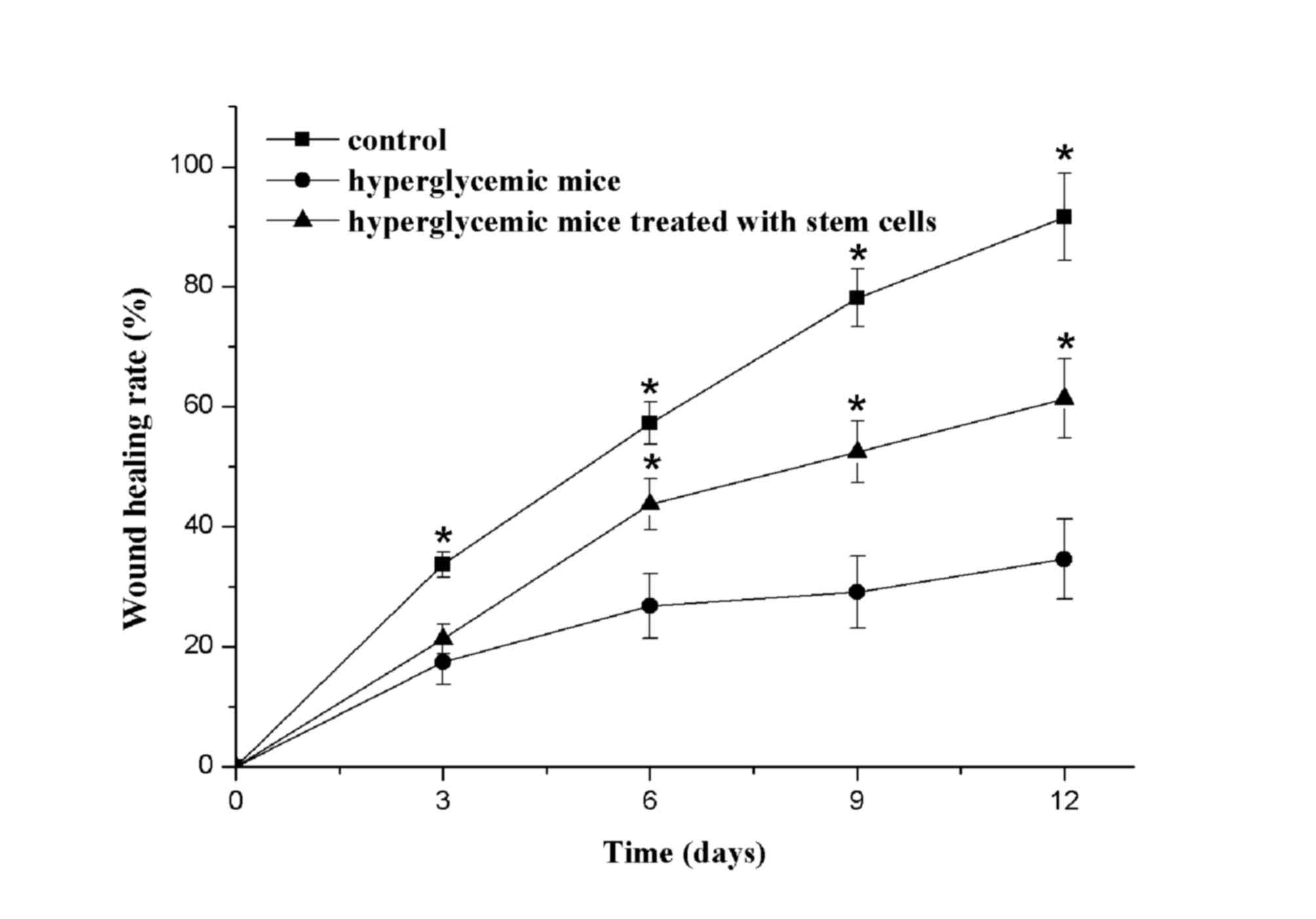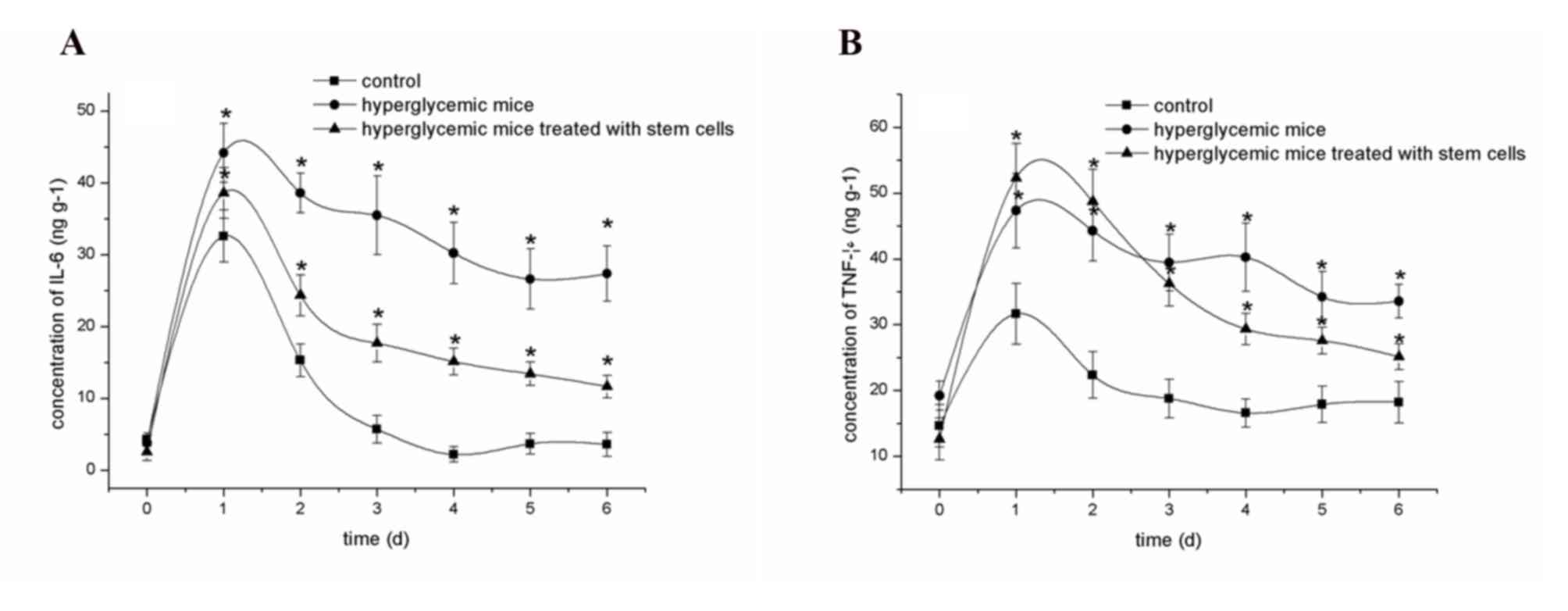|
1
|
Kucisec-Tepes N: Prevention of chronic
wound infection. Acta Med Croatica. 67:(Suppl 1). S51–S58. 2013.(In
Croatian).
|
|
2
|
Park NJ, Allen L and Driver VR: Updating
on understanding and managing chronic wound. Dermatol Ther.
26:236–256. 2013. View Article : Google Scholar : PubMed/NCBI
|
|
3
|
Yazdanpanah L, Nasiri M and Adarvishi S:
Literature review on the management of diabetic foot ulcer. World J
Diabetes. 6:37–53. 2015. View Article : Google Scholar : PubMed/NCBI
|
|
4
|
Gourevitch D, Kossenkov AV, Zhang Y, Clark
L, Chang C, Showe LC and Heber-Katz E: Inflammation and its
correlates in regenerative wound healing: An alternate perspective.
Adv Wound Care (New Rochelle). 3:592–603. 2014. View Article : Google Scholar : PubMed/NCBI
|
|
5
|
Oberyszyn TM: Inflammation and wound
healing. Front Biosci. 12:2993–2999. 2007. View Article : Google Scholar : PubMed/NCBI
|
|
6
|
Gyurko R, Siqueira CC, Caldon N, Gao L,
Kantarci A and Van Dyke TE: Chronic hyperglycemia predisposes to
exaggerated inflammatory response and leukocyte dysfunction in
Akita mice. J Immunol. 177:7250–7256. 2006. View Article : Google Scholar : PubMed/NCBI
|
|
7
|
Nguyen KT, Seth AK, Hong SJ, Geringer MR,
Xie P, Leung KP, Mustoe TA and Galiano RD: Deficient cytokine
expression and neutrophil oxidative burst contribute to impaired
cutaneous wound healing in diabetic, biofilm-containing chronic
wounds. Wound Repair Regen. 21:833–841. 2013. View Article : Google Scholar : PubMed/NCBI
|
|
8
|
Jackson WM, Nesti LJ and Tuan RS:
Mesenchymal stem cell therapy for attenuation of scar formation
during wound healing. Stem Cell Res Ther. 3:202012. View Article : Google Scholar : PubMed/NCBI
|
|
9
|
Shin L and Peterson DA: Human mesenchymal
stem cell grafts enhance normal and impaired wound healing by
recruiting existing endogenous tissue stem/progenitor cells. Stem
Cells Transl Med. 2:33–42. 2013. View Article : Google Scholar : PubMed/NCBI
|
|
10
|
Zheng L, Chu J, Tan L, Shi Y and Han Y:
Immunoregulation of autologous peripheral blood stem cell
transplantation in patients with hepatitis B-related end-stage
liver disease. Xi Bao Yu Fen Zi Mian Yi Xue Za Zhi. 29:407–410.
2013.(In Chinese). PubMed/NCBI
|
|
11
|
Akiyama K, Chen C, Wang D, Xu X, Qu C,
Yamaza T, Cai T, Chen W, Sun L and Shi S:
Mesenchymal-stem-cell-induced immunoregulation involves
FAS-ligand-/FAS-mediated T cell apoptosis. Cell Stem Cell.
10:544–555. 2012. View Article : Google Scholar : PubMed/NCBI
|
|
12
|
Short BJ, Brouard N and Simmons PJ:
Prospective isolation of mesenchymal stem cells from mouse compact
bone. Methods Mol Biol. 482:259–268. 2009. View Article : Google Scholar : PubMed/NCBI
|
|
13
|
Blanpain C: Stem cells: Skin regeneration
and repair. Nature. 464:686–687. 2010. View
Article : Google Scholar : PubMed/NCBI
|
|
14
|
Morin C, Roumegous A, Carpentier G,
Barbier-Chassefière V, Garrigue-Antar L, Caredda S and Courty J:
Modulation of inflammation by Cicaderma ointment accelerates skin
wound healing. J Pharmacol Exp Ther. 343:115–124. 2012. View Article : Google Scholar : PubMed/NCBI
|
|
15
|
Minton K: Chemokines: Neutrophils leave a
trail for T cells. Nat Rev Immunol. 15:5972015. View Article : Google Scholar : PubMed/NCBI
|
|
16
|
Ariel A, Fredman G, Sun YP, Kantarci A,
Van Dyke TE, Luster AD and Serhan CN: Apoptotic neutrophils and T
cells sequester chemokines during immune response resolution
through modulation of CCR5 expression. Nat Immunol. 7:1209–1216.
2006. View
Article : Google Scholar : PubMed/NCBI
|
|
17
|
Tian M, Qing C, Niu Y, Dong J, Cao X, Song
F, Ji X and Lu S: The relationship between inflammation and
impaired wound healing in a diabetic rat burn model. J Burn Care
Res. 37:e115–e124. 2016. View Article : Google Scholar : PubMed/NCBI
|
|
18
|
Koh TJ and DiPietro LA: Inflammation and
wound healing: The role of the macrophage. Expert Rev Mol Med.
13:e232011. View Article : Google Scholar : PubMed/NCBI
|
|
19
|
Gardian K, Janczewska S, Olszewski WL and
Durlik M: Analysis of pancreatic cancer microenvironment: Role of
macrophage infiltrates and growth factors expression. J Cancer.
3:285–291. 2012. View
Article : Google Scholar : PubMed/NCBI
|
|
20
|
Owen JL and Mohamadzadeh M: Macrophages
and chemokines as mediators of angiogenesis. Front Physiol.
4:1592013. View Article : Google Scholar : PubMed/NCBI
|
|
21
|
Rosas-Ballina M, Valdés-Ferrer SI, Dancho
ME, Ochani M, Katz D, Cheng KF, Olofsson PS, Chavan SS, Al-Abed Y,
Tracey KJ and Pavlov VA: Xanomeline suppresses excessive
pro-inflammatory cytokine responses through neural signal-mediated
pathways and improves survival in lethal inflammation. Brain Behav
Immun. 44:19–27. 2015. View Article : Google Scholar : PubMed/NCBI
|
|
22
|
Li HP, Chen X and Li MQ: Gestational
diabetes induces chronic hypoxia stress and excessive inflammatory
response in murine placenta. Int J Clin Exp Pathol. 6:650–659.
2013.PubMed/NCBI
|
|
23
|
Wang J, Zhou J, Zheng HF and Fu ZZ: Effect
of decitabine on immune regulation in patients with acute myeloid
leukemia after allogeneic hematopoietic stem cell transplantation.
Zhongguo Shi Yan Xue Ye Xue Za Zhi. 22:1448–1452. 2014.(In
Chinese). PubMed/NCBI
|
|
24
|
Zhao Y, Huang Z, Qi M, Lazzarini P and
Mazzone T: Immune regulation of T lymphocyte by a newly
characterized human umbilical cord blood stem cell. Immunol Lett.
108:78–87. 2007. View Article : Google Scholar : PubMed/NCBI
|
|
25
|
Chen YT, Sun CK, Lin YC, Chang LT, Chen
YL, Tsai TH, Chung SY, Chua S, Kao YH, Yen CH, et al:
Adipose-derived mesenchymal stem cell protects kidneys against
ischemia-reperfusion injury through suppressing oxidative stress
and inflammatory reaction. J Transl Med. 9:512011. View Article : Google Scholar : PubMed/NCBI
|
|
26
|
Moslem M, Eberle I, Weber I, Henschler R
and Cantz T: Mesenchymal stem/stromal cells derived from induced
pluripotent stem cells support CD34(pos) hematopoietic stem cell
propagation and suppress inflammatory reaction. Stem Cells Int.
2015:8430582015. View Article : Google Scholar : PubMed/NCBI
|















